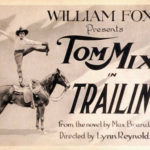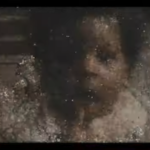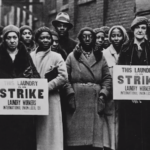National Film Preservation Foundation Awards 36 Preservation Grants
13 June 2017 — The National Film Preservation Foundation has announced grants to preserve 57 films, including Code Blue, a 1972 recruitment film aimed at bringing minorities into the medical field made by Henry Hampton’s Blackside Inc., the producer of Eyes on the Prize, and Broken Barriers, from 1919, the first motion-picture adaptation of the Sholem Aleichem story that inspired Fiddler on the Roof.
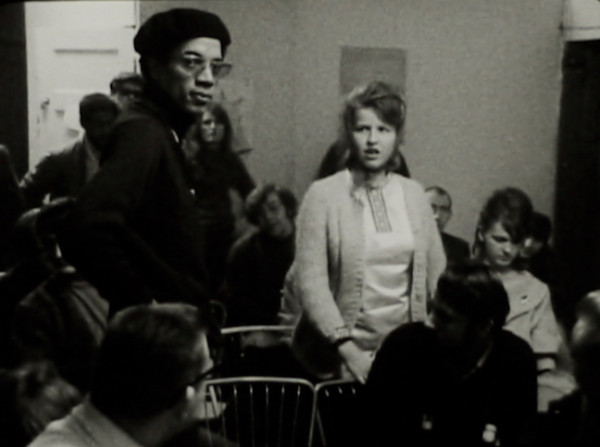
Chicago Film Archives will restore “American Revolution II” (1969), a Film Group documentary on the alliance between the Black Panthers and Chicagoans from a white working-class neighborhood.
The NFPF preservation grants target newsreels, silent-era films, culturally important home movies, avant-garde films, and endangered independent productions that aren’t identified for preservation by for-profit companies. The awards provide support to create a film preservation master and two access copies of each work. Films saved are then made publicly available for on-site research as well as for screenings and exhibits, DVD manufacture, and television and Internet broadcasting.
The nonprofit NFPF is an affiliate of the National Film Preservation Board of the Library of Congress that the U.S. Congress created in 1996 to help save America’s film heritage. It receives federal money through the U.S. Library of Congress to distribute as grants, but raises operating and project funding from other sources. Since its creation by Congress in 1996, the NFPF has provided preservation support to 309 institutions and saved more than 2,350 films through grants and collaborative projects in all 50 U.S. states, the District of Columbia, and Puerto Rico. A catalog of the films is online.
The NFPF publishes the award-winning Treasures from American Film Archives DVD series, which makes available rare films preserved by public and nonprofit archives that have not been commercially distributed.
This year’s recipients:
Adirondack Council · Adirondack Holiday (1960), sponsored film from the Essex County Chamber of Commerce to promote tourism in Adirondack Park, in New York state.
Alaska Moving Image Preservation Association · Clarence Erwin Rusch Collection (1934–42), home movies of a Bureau of Indian Affairs teacher among the Koyukon people of rural Alaska. In 2008, the AMIPA received an NFPF grant to restore a 16mm film depicting a river craft on the Yukon River near Koyukuk. The reel proved to be of great interest to researchers, so AMIPA proposed to NFPF that it restore the remainder of the footage Rusch shot while living in rural Alaska.
American Jewish Joint Distribution Committee · Poland Postwar 1949 (1949), documentation of the Jewish Distribution Committee’s humanitarian activities before it was forced out by the postwar communist government. · South American Children’s Colony (1944) footage of a Buenos Aires children’s home for German-speaking Jewish refugees.
American Museum of Natural History · Modern Taxidermy: Mounting an Indian Elephant (1926–27), footage of taxidermist Louis Jonas at work in the Museum studio. · Preparing a Museum Group (1950), step-by-step documentation of a diorama being assembled for the Hall of North American Mammals.
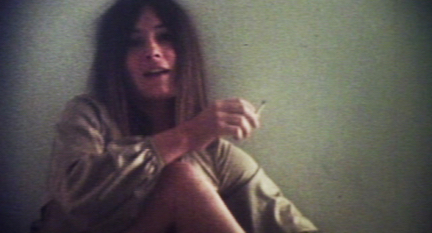 Anthology Film Archives · My Girlfriend’s Wedding (1969), Jim McBride’s experimental and autobiographical documentary about his English partner’s marrying another man, for immigration purposes. Like Ed Pincus’s Diaries (see Harvard Film Archive, below), My Girlfriend’s Wedding is a landmark diary films from the height of the American independent film renaissance.
Anthology Film Archives · My Girlfriend’s Wedding (1969), Jim McBride’s experimental and autobiographical documentary about his English partner’s marrying another man, for immigration purposes. Like Ed Pincus’s Diaries (see Harvard Film Archive, below), My Girlfriend’s Wedding is a landmark diary films from the height of the American independent film renaissance.
Archives of American Art, Smithsonian Institution · Cornelia Chapin Collection (1932–39), home movies by the artist known for her direct-carved animal sculptures.
Association for Cultural Equity · Alan Lomax Choreometrics Films (late 1960s), seven training films for a dance analysis method developed by Alan Lomax.
Bard College · Earthly Possessions (1992), experimental gothic tale by Pelle Lowe. · Smoke (1995), abstract exploration of individuality by Pelle Lowe.
Bowdoin College · The Birds of Grenfelland (ca.1931), documentation of ornithologist Alfred Otto Gross’s research in Newfoundland and Labrador, featuring medical missionary Sir Wilfred Grenfell. · The Heath Hen (ca.1932), rare footage of the last surviving Heath Hen, nicknamed Booming Ben.
Chicago Film Archives · American Revolution II (1969), Film Group documentary on the alliance between the Black Panthers and Chicagoans from a white working-class neighborhood.
Chicago Film Society · The Editor’s Notebook (1950), promotional film about the Chicago Daily News in its Pulitzer Prize–winning heyday.
Congregation of Sisters of St. Agnes · Decision for Happiness (1958), sponsored film about a young woman’s decision to join the Sisters of St. Agnes convent in Fond du Lac, Wisconsin.
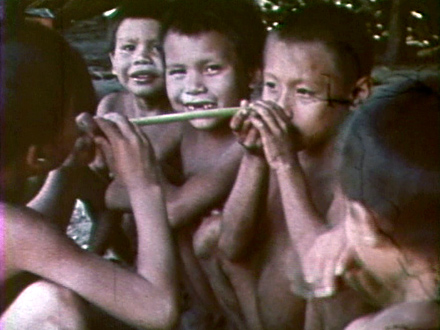 Documentary Educational Resources · films by filmmaker Timothy Asch and anthropologist Napoleon Chagnon: Arrow Game (1974), documentation of Yanomamo children’s games. · Children’s Magical Death (1974; image, right), footage of Yanomamo children imitating their shaman fathers. · Climbing the Peach Palm (1974), observational study of Yanomamo tool use. · Magical Death (1973), documentation of Yanomamo shamanism. · A Man and His Wife Weave a Hammock (1975), observational study of Yanomamo daily life and crafts. · A Man Called “Bee” (1974), documentation of Chagnon’s fieldwork among the Yanomamo. · A Father Washes His Children (1974), observational study of a Yanomamo headman. · Moonblood: A Yanomano Creation Myth (1976), exploration of Yanomamo mythology. · Weeding the Garden (1974), documentation of everyday Yanomamo life.
Documentary Educational Resources · films by filmmaker Timothy Asch and anthropologist Napoleon Chagnon: Arrow Game (1974), documentation of Yanomamo children’s games. · Children’s Magical Death (1974; image, right), footage of Yanomamo children imitating their shaman fathers. · Climbing the Peach Palm (1974), observational study of Yanomamo tool use. · Magical Death (1973), documentation of Yanomamo shamanism. · A Man and His Wife Weave a Hammock (1975), observational study of Yanomamo daily life and crafts. · A Man Called “Bee” (1974), documentation of Chagnon’s fieldwork among the Yanomamo. · A Father Washes His Children (1974), observational study of a Yanomamo headman. · Moonblood: A Yanomano Creation Myth (1976), exploration of Yanomamo mythology. · Weeding the Garden (1974), documentation of everyday Yanomamo life.
George Eastman Museum · Love or Justice (1917), silent melodrama produced by Thomas Ince, involving a drug-addicted lawyer’s redemption by a woman from the underworld. Ince was among the first studio-style film producers, operating from a 43-acre facility with more than 1,000 employees.
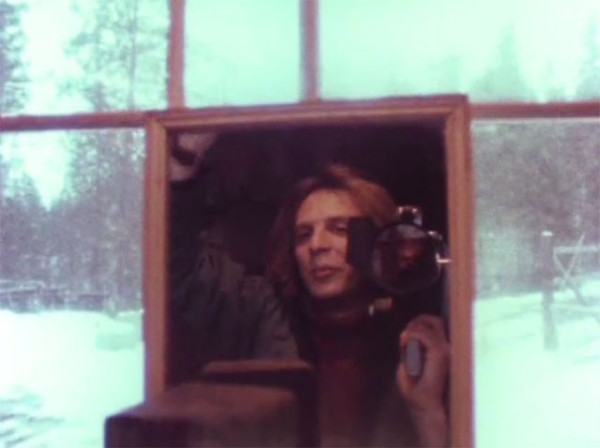 Harvard Film Archive · Diaries (1971–76), Ed Pincus’s self-reflexive portrait of five years of marriage and family life. Like Jim McBride’s My Girlfriend’s Wedding (see Anthology Film Archives, above), Diaries (left) is a landmark diary films from the height of the American independent film renaissance.
Harvard Film Archive · Diaries (1971–76), Ed Pincus’s self-reflexive portrait of five years of marriage and family life. Like Jim McBride’s My Girlfriend’s Wedding (see Anthology Film Archives, above), Diaries (left) is a landmark diary films from the height of the American independent film renaissance.
Historical Society of Harford County (Bel Air, Maryland) · Robert and Anne Heighe Collection (late 1920s), home movies from a Maryland Thoroughbred farm depicting champion racehorses Man O’ War and Durbar II and the sculptor Cornelia Chapin.
Hoover Institution, Stanford University · ALSOS Mission Films (1943–45), footage documenting the secret task force that investigated Nazi Germany’s atomic bomb program and secured the surrender of Thanheim.
Indiana University · The Inner World of Aphasia (1968), innovative medical training film on treating patients unable to communicate verbally that in 2015 was named to the National Film Registry.
Johns Hopkins University · pioneering heart-surgery footage from the institution: Closed Chest Defibrillation (1961), promotional film for the first external defibrillator designed and used at Johns Hopkins. · Life in Your Hands (1961), instructional film for training rescue teams in CPR. · Miracle in a Month (1946), home movies showing a young boy before and after a “blue baby” operation to cure a heart defect. · Surgical Treatment of Coarctation of the Aorta (1947), earliest known footage of the procedure for correcting the congenital heart defect.
Louisiana Museum Foundation · The Don Perry Collection (1968–69), nine films documenting the 1968 and 1969 New Orleans International Jazz Festivals.
Montana Historical Society · Wilson-Hibbs Oil Speech (1956), documentation of Governor J. Hugo Aronson’s stance on oil and gas leasing in Montana. · Montana’s On the Go (1956), promotional film showing Gov. Aronson on the Montana campaign trail for reelection.
Museum of Texas Tech University · Yaqui Fieldwork Collection (1938–55), earliest known footage of Yaqui life in Sonora, filmed during expeditions led by Museum director W. Curry Holden.
Nashville Public Library · Wayne Mitsch Collection (1969–70) home movies of the 75th Infantry Airborne Ranger Reconnaissance Team in central Vietnam.
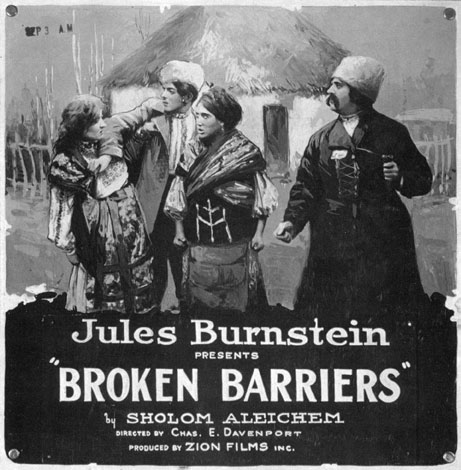
With its NFPF grant, the National Center for Jewish Film will preserve “Broken Barriers” (1919), the first motion-picture adaptation of the Sholem Aleichem story that inspired one of the most successful musicals of all time, “Fiddler on the Roof” (1964). The story was also adapted in Maurice Schwartz’s seminal 1939 Yiddish-language feature film “Tevye.”
National Center for Jewish Film · Broken Barriers (1919), silent feature adaptation of the Sholem Aleichem story that became Fiddler on the Roof.
National Geographic Society · Canyon de Chelly (1924), filmed exploration of the National Monument’s rock formations and Navajo culture by archeologist Neil Judd. · Pueblo Bonito (1922), footage of the New Mexico expedition led by archaeologist Neil Judd to explore the pre-Columbian great house.
New York Public Library · The Flashettes (1977), Bonnie Friedman’s empowering documentary about a Brooklyn track team of underprivileged African American girls.
New York University · Laserimage (1971–72), Ivan Dryer’s celluloid forerunner to the Laserium light show.
Pacific Film Archive · The Brink (1960), lyrical love story by Beat poet ruth weiss. · Scenes from the Tap City Circus (1960), mixed-media artist Paul Beattie’s experimental portrait of assemblage-sculptor George Herms at work. · A Thimble of Goodbye (1960), Dadaist “film poem” by Paul Beattie.
Silver Bow Art · Bathers (1960), Beryl Sokoloff’s lyrical portrait of visitors to Coney Island. · Immigrant (1960), Beryl Sokoloff’s vision of New York as seen through the eyes of a stranger. · Tomb (1961), musical collage film by Beryl Sokoloff.
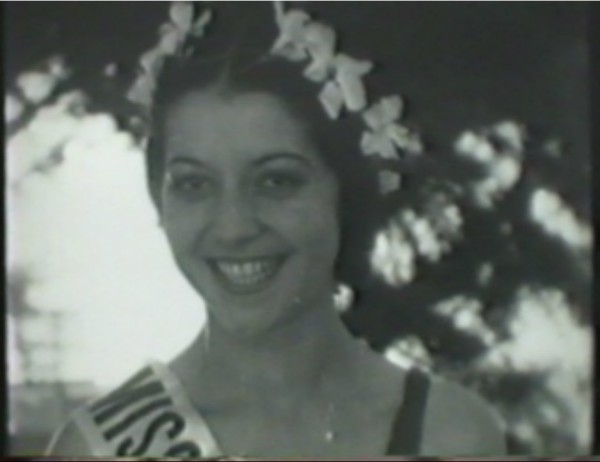 Texas Archive of the Moving Image · George Sealy Jr. Collection (1931), Galveston civic leader’s Kodacolor footage of the 1931 Pageant of Pulchritude, a Miss Universe precursor.
Texas Archive of the Moving Image · George Sealy Jr. Collection (1931), Galveston civic leader’s Kodacolor footage of the 1931 Pageant of Pulchritude, a Miss Universe precursor.
The Flaherty · Troublemakers (1966), Norman Fruchter and Robert Machover’s documentary about community organizing in the Central Ward neighborhood of Newark, New Jersey. The Flaherty is one of the oldest continuously running nonprofit media arts institutions in the world.
Trisha Brown Dance Company · Solo Olos (1978), a recently rediscovered film by Babette Mangolte of an experimental dance by the late Trisha Brown.
UCLA Film & Television Archive · The Savages (1967), ironically titled cinema verité documentary about the impoverished African American community of West Venice, California.
Visual Studies Workshop · About Us (1972), collaborative anthology of self-portraits by Robert Frank and his students.
Washington University (St. Louis) · Code Blue (1972), recruitment film to bring minorities into the medical profession by Blackside Inc., producer of Eyes on the Prize.
Yale University · 16 Millimeter Earrings (1979), filmed recreation of Meredith Monk’s multimedia solo performance.
— NFPF release & MIAN
Previous Post: Smile, You're on a Police Body-Worn Camera
Next Post: Washington University Preserves Rare Civil Rights Documentary

